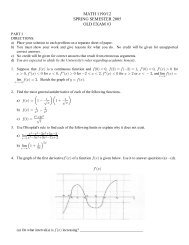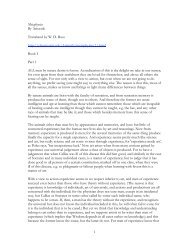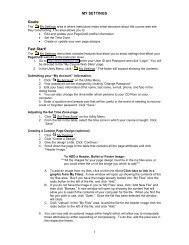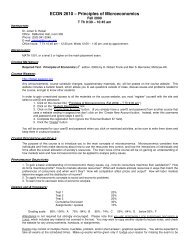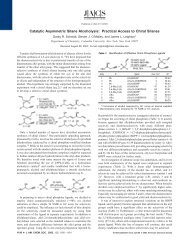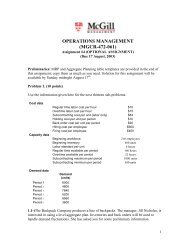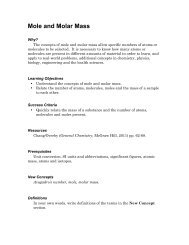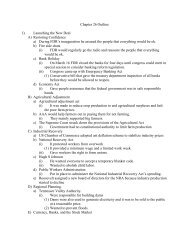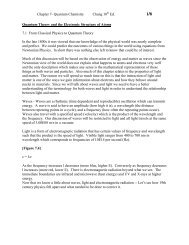Physics Lab 4.2: Kites, Surface Area and Newton's 3 Law - PageOut
Physics Lab 4.2: Kites, Surface Area and Newton's 3 Law - PageOut
Physics Lab 4.2: Kites, Surface Area and Newton's 3 Law - PageOut
You also want an ePaper? Increase the reach of your titles
YUMPU automatically turns print PDFs into web optimized ePapers that Google loves.
How to Build a Sled Kite: A recent kite design, the sled, is simple to build <strong>and</strong> a powerful lifting machine inlight-to-moderate breezes. A 43-cm x 64-cm model is illustrated, but one can vary these dimensions <strong>and</strong>determine the lifting capacity of other models with different surface areas. A simple scaling activity using graphpaper can precede kite building to illustrate changes in size while retaining proportional dimension.Materials:St<strong>and</strong>ard-size brown paper grocery bagsMasking tapeKite string2 Force meters per kiteTools:PencilsMeter sticks or rulersScissorsColored markersKite construction: Complete the following construction steps:1. Cut out the side <strong>and</strong> bottom of a st<strong>and</strong>ard-sized brown paper grocery bag.2. Unfold the bag <strong>and</strong> mark out the dimensions given in the illustration.3. Reinforce the bridle-attachment points with tape <strong>and</strong> attach bridle string (approximately 2 meters in length,depending on the kite). Tie a simple loop knot, at the midpoint of the bridle.4. Decorate as desired using colored markers.5. Use the dimensions below to create kites with different surface areas.Full-Scale Kite: <strong>Surface</strong> <strong>Area</strong> = 2021 cm 2 Half-Scale Kite: <strong>Surface</strong> <strong>Area</strong> = 1010.5 cm 2The kite above has not been drawn to scale.2
Kite Testing Procedure:1. Prior to flying your kites, attach two force meters to one another <strong>and</strong> pull gently apart. What do you noticewhen you read each meter?2. Finish this hypothesis: If surface area of a kite increases, then…3. Fly a large <strong>and</strong> small kite while st<strong>and</strong>ing side by side in a line that runs perpendicular to the wind. Both kitesshould also be flying at the same altitude.4. While flying your 2 kites, create a small loop on each string <strong>and</strong> attach a spring scale.5. Measure the force pulling on each kite at the same instant so that the wind speed will be the same for eachkite.6. Write your data below <strong>and</strong> continue for 4 more trials.<strong>Surface</strong> <strong>Area</strong>Force (Newtons) Exertedof Kite Trial 1 Trial 2 Trial 3 Trial 4 Trial 51010.5 cm 22021 cm 2AverageForce (N)7. After flying, share your Average Force data with the class.8. Create a scatter-plot graph of the class data to show how surface area of the kite is related to force.How <strong>Surface</strong> <strong>Area</strong> (cm 2 ) of the KiteAffects Force (Newtons)Force (Newtons)<strong>Surface</strong> <strong>Area</strong> of Kite (cm 2 )3
9. What is the relationship between surface area <strong>and</strong> force? Analyze the graph <strong>and</strong> explain.10. Which pulled harder? The kite or your h<strong>and</strong>?Don’t forget to write a coherent conclusion.4




